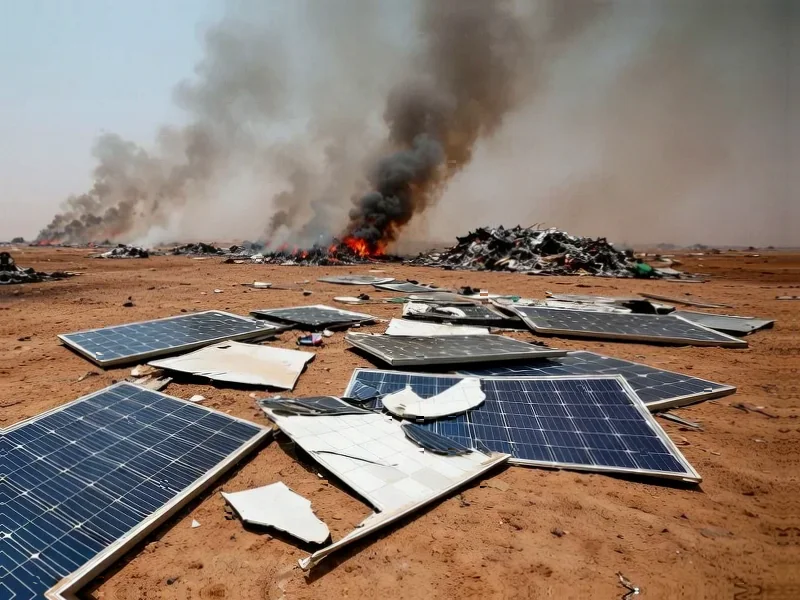According to IEEE Spectrum: Technology, Engineering, and Science News, Eavor’s geothermal project in Geretsried, Germany achieved a 50% reduction in drilling time for its final four wells after initial challenges saw the first eight wells take over 100 days to complete. The Canadian startup, which received a $107 million EU Innovation Fund grant, deployed insulated drill pipe technology that tripled drill bit lifespan while enabling faster drilling in extreme underground temperatures. The system, scheduled to begin power production later this year, will eventually deliver 8.2 megawatts of electricity and 64 MW of district heating through four interconnected loops reaching 2.8 miles underground. While these improvements signal potential cost reductions, the technology faces fundamental questions about its economic scalability.
The Drilling Breakthrough in Context
The reported 50% drilling time reduction represents a significant engineering achievement, but it’s crucial to understand this within the brutal economics of deep drilling. At approximately $100,000 per day for drilling rig operations, even a 50% reduction from an initial 100+ day timeline still leaves projects vulnerable to catastrophic cost overruns. What Eavor hasn’t disclosed is whether these improvements came from proprietary technology or optimized application of existing oil and gas techniques. The geothermal industry has historically struggled with technology transfer challenges from fossil fuel extraction, where drilling budgets are substantially higher and risk tolerance differs dramatically.
The Heat Transfer Bottleneck
Professor Jefferson Tester’s caution about closed-loop systems highlights a fundamental physical limitation that no amount of drilling efficiency can overcome. The pipe-based heat exchange method inherently restricts energy extraction compared to enhanced geothermal systems that create artificial reservoirs. While Eavor claims a 35% thermal output improvement per loop, they haven’t revealed baseline efficiency metrics or how this compares to conventional geothermal or competing next-generation approaches. The critical question isn’t whether they can extract heat—it’s whether they can do so at energy densities that justify the massive capital investment required for miles-deep drilling operations.
Scaling Challenges Ahead
Eavor’s March 2026 timeline for its second loop construction reveals the deliberate pace of this technology’s deployment. Unlike solar or wind projects that can scale rapidly once proven, each geothermal loop represents a unique engineering challenge dependent on local geology. The company’s learning curve optimism must be tempered by the reality that geothermal projects face site-specific variables that resist standardization. While partnerships with established energy companies provide validation, they don’t eliminate the geological uncertainties that have bankrupted numerous geothermal ventures throughout history.
Market Viability Reality Check
The reference to Europe’s “levelized cost of heat” between $50-$100 per megawatt-hour requires careful interpretation. This range reflects Europe’s uniquely high energy prices post-Ukraine invasion rather than a globally competitive benchmark. In North American markets, geothermal must compete with natural gas prices that frequently sit below $30 per MWh. More importantly, Eavor’s claimed cost alignment appears based on modeling rather than actual operational data from a completed commercial project. The true test will come when the Geretsried facility operates through multiple seasonal cycles and demonstrates whether it can maintain projected output levels without unexpected maintenance costs.
Geothermal’s Competitive Landscape
Eavor’s progress occurs alongside Fervo Energy’s enhanced geothermal developments in Utah and Nevada, creating a natural experiment in competing technological approaches. While closed-loop systems avoid fracking-related controversies, they face their own regulatory and technical hurdles. The geothermal industry’s fragmentation across multiple technology paths suggests that no single solution has yet demonstrated clear superiority. What’s increasingly evident is that geothermal’s future likely depends on hybrid approaches that combine the best elements of multiple technologies rather than betting everything on one design philosophy.
The Road Ahead
The coming 12-18 months will be decisive for Eavor and the broader advanced geothermal sector. As the Geretsried project moves from demonstration to commercial operation, the industry will gain its first meaningful dataset on closed-loop performance at scale. Success could trigger the investment needed to drive further cost reductions through standardization and manufacturing scale. However, any significant underperformance in energy output or reliability could reinforce investor skepticism about geothermal’s ability to compete with other clean energy technologies. The drilling time improvement is genuinely promising, but it’s merely the opening chapter in a much longer story about whether geothermal can finally deliver on its perennial promise.




